October 30, 2015
Dear WinkWorld Readers,
You may remember that recently, I asked the question: Why stories? I used the story of Violet, age 5, who was having a terrible time with her numbers to 100, until she could place them in a story.
Click here to read the story of Violet.
As I wrote about Violet’s struggles with numbers, I was reminded of my statistic class when I worked on my Ph. D. Our prof, who was close to retirement age, was a legend at TX A&M. He was the consummate gentleman, who wore a white shirt and bow tie to every class. One of my colleagues, who did her Ph. D. in math education, knew him well and told me to keep a very close eye on him all semester, as it would be worth every minute. So, I did. I sat front and center of the class. My most lasting memory is all of the 35 to 40-year-olds, who had never been away from an annual math class or two their entire lives. Some even fell asleep in the back row; they always seemed bored and blasé. I was afraid to blink for fear that I would miss something, as there had been very little math in my years of teaching Spanish and raising a family, and certainly, there had been no statistics.
In those days, we didn’t have devices in class; calculators existed, but we were not allowed to use them. Each problem had to be completely worked on yellow legal pad–reams and reams of legal pad. The prof checked each step of the calculation for each student. If an error was found, he showed it to us, and we had to do it again.
On an old-fashioned chalkboard, he meticulously worked out each problem for us. Chalk flew in all directions. I often wondered about how much chalk he actually used in a semester. Stat was a mystery for me; however, I apparently got so I could do the problems, as I know that I got good grades. One problem: I never, ever knew what I was doing. Not a clue.
I now understand that I simply needed to put all of that stat into a story to understand, like 5-year-old Violet had done. But, I digress: Remember, I was front and center of the class, watching like a hawk to see what he would do, as my friend had promised.
Sure enough, one day when the rest of the class seemed particularly bored or sleepy, and I was ever-vigilant. The prof was madly writing numbers on the chalkboard. In an instant, he passed his hand with a brand-new large piece of chalk in front of his face and magically popped the new piece of chalk into his mouth. He chewed the whole thing without ever acknowledging that anything might be unusual about that. He just continued to explain the specific problem. I looked around on both sides and behind me, as I wanted to enjoy this moment with someone. Not another soul noticed. I was in awe of the prof, and I think I noted a slight twinkle in his eye.
Finally, I had my story, and from that moment on, I knew that if I were ever going to make stat meaningful for teachers, I would have to find a story in the numbers and charts. When I went on to teach at the university, I loved research and still do, but it is always about making it meaningful with a story.
Now, back to Violet, whose mother, Ruthie, is now struggling with regression in her statistics class for her Ph. D. Turns out, that it is not just Violet and I, who need a story to understand.
Ruthie writes:
I am convinced that narratives are the most important and underutilized pedagogical tool in our arsenal. Not only did I recently experience this power of the narrative with Violet, but also in my own attempt to understand regression in my statistics class–albeit, at very different ends of the educational spectrum.
Last semester, I was taking a course in quantitative methods. The professor divided the course into three units. The final unit of the course was comprehensive test on the content of an entire graduate-level statistics text. He didn’t have us buy and read the text for his class, but I happen to stumble upon the text that he had used to write his lectures, as I was trying to learn the information on my own. All of the examples, topics, and course materials were taken directly from the text that I found.
Anyway, when listening to the lectures and doing the work in class, I was so lost that whenever he would ask if we understood, I would say “yes” because I wanted him to stop talking. Everything that he said confused and frustrated me even more. Even after doing the course readings and looking for additional information, I was still lost. I did not understand how to read the tables. I could never remember which pieces of information were necessary and which were superfluous. Moreover, I couldn’t accurately and confidently construct a meaningful whole out of the different tables and statistical information I was given.
Two days before the final exam, I was in a panic. I found another Ph. D. student, who is very strong in statistics. Her background is in finance. I explained my problem and how every time I looked at my notes and tried to study, I just wanted to cry.
“You have to look for the story,” she said to me, as I quickly printed out a sample regression table. She showed me the story on the chart. She showed me which aspect of the chart to look at to find the beginning of the story; what questions to ask to find the next elements of the story; where to find the answers: and how to interpret the data given.
After that short session, I knew how to interpret a regression. I understood what kind of data I needed to run a regression, and I was able to explain any regression analysis that my Google search could find.
Moreover, I was able to apply the principle of looking for the story in the data to other types of statistical analysis. I got a 99 on my final exam. The missing piece was learning how to construct the narrative from the data tables.
“But, did she eat the chalk?” I wanted to ask.
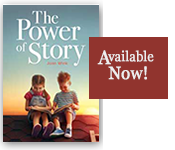
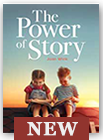
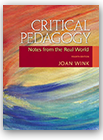
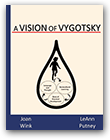

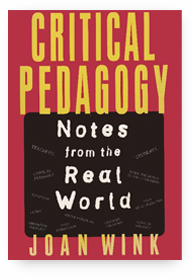

at 10:32 pm
I am wondering about the chalk too? I am trying to get better at looking for the story but sometimes, like Ruthie and Joan, the information is overwhelming. I wonder how often my students say yes, when I ask if they understand, just to get me to stop talking. Great article.
at 11:55 am
Yes, Ruthie’s comment is a lesson for all of us: How often do the students just say yes they understand, so that we will stop talking?